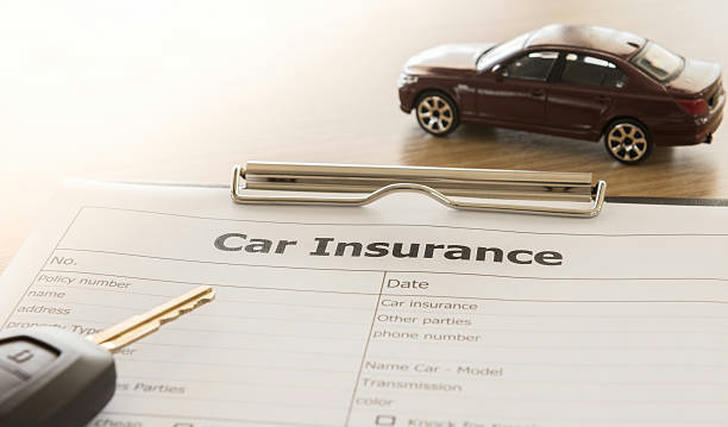Car Insurance for Low-Income Families: How to Lower Your Premium in 2024
As car insurance premiums rise in 2024, many low-income families are struggling to find affordable coverage. The good news is that there are several strategies to lower your insurance costs without sacrificing coverage. This article explores affordable options that can help low-income drivers save money while still staying protected on the road.

Options for Low-Income Families
1. State-Sponsored Low-Cost Auto Insurance Programs
Some states offer subsidized car insurance programs to help low-income drivers meet the minimum coverage requirements. These programs typically provide basic liability insurance at a reduced rate. Here are a few examples:
• California: The California Low-Cost Automobile Insurance Program (CLCA) offers affordable liability coverage for eligible low-income drivers.
• Hawaii: Hawaii's Auto Insurance Discount Program helps drivers with limited income get discounts on their coverage.
• Michigan: Michigan offers assistance through the Michigan Automobile Insurance Fraud Prevention Authority, which helps low-income families access affordable insurance.
• New Jersey: The Low Cost Auto Insurance Program in New Jersey provides reduced premiums for eligible drivers.
★ To apply, you may need to provide proof of income. Be sure to contact your state's Department of Insurance for more details.
2. Liability-Only Coverage
If your car is older or you drive a low-value vehicle, liability-only coverage may be a more affordable option. This type of insurance only covers damage to others’ property or injuries caused by your driving, and not damage to your own car. It's often the most cost-effective way to meet legal requirements without paying high premiums.

3. Take Advantage of Insurance Discounts
Insurance companies offer various discounts that can help lower your premium. Common discounts include:
• Good Driver Discount: A clean driving record can earn you a discount.
• Low-Mileage Discount: If you don’t drive often, you could save on premiums.
• Multi-Vehicle Discount: Insure more than one car for a discounted rate.
• Bundling Discount: Combine your car insurance with other policies (like renters or homeowners insurance) for a discount.
• Pay-in-Full Discount: Pay your premium upfront instead of monthly for potential savings.
• Safety Features Discount: Cars with airbags, anti-theft devices, or automatic braking systems can qualify for discounts.
★ Always ask your insurer about available discounts when shopping for a policy.
4. Seek Help from Nonprofit and Charitable Organizations
Some nonprofit organizations provide financial assistance or guidance to low-income families struggling to afford car insurance. While they may not offer insurance directly, they may offer grants, financial aid, or help you find discounts. Examples include:
• The Salvation Army: Offers financial assistance to low-income families, including for car insurance costs.
• Local Charities: Many community organizations can help cover basic living expenses, sometimes including car insurance.
5. Usage-Based Insurance (UBI)
If you don’t drive often, usage-based insurance (UBI) might be a great option. UBI programs track your driving habits through a smartphone app or telematics device, adjusting your premium based on how much you drive. Popular UBI programs include:
• Progressive Snapshot
• Allstate Drivewise
• State Farm Drive Safe & Save
These programs are ideal for low-mileage drivers and can significantly lower insurance costs.

6. Shop Around and Compare Quotes
Insurance premiums can vary widely between providers. It’s important to get quotes from multiple companies to find the best deal. Many online tools allow you to compare rates quickly, helping you save time and money.
7. Employer or Union-Sponsored Insurance
If you’re employed or a union member, you may qualify for group car insurance discounts. Check with your HR department or union representative to see if these benefits are available to you.
8. Consider Pay-Per-Mile Insurance
For drivers who rarely use their cars, pay-per-mile insurance is a cost-effective option. Companies like Metromile charge a low base rate plus a fee for each mile you drive. This could be a perfect choice for those who only use their car occasionally.
9. Opt for a Higher Deductible
Raising your deductible (the amount you pay out of pocket before insurance kicks in) can lower your monthly premiums. While this means you'll pay more if you make a claim, it can significantly reduce your overall insurance costs.
10. Explore Community Resources and Government Assistance
Some local governments or community organizations offer assistance to low-income drivers, such as help with registration fees or connecting you to financial resources for insurance coverage. Check with your local government for any available programs.
11. Insurance for High-Risk Drivers
If you have a history of traffic violations or accidents, you may be considered a high-risk driver. Some states, like California, offer programs (e.g., the California Automobile Assigned Risk Plan, or CAARP) to provide insurance for high-risk drivers at a lower rate.

Conclusion: Affordable Car Insurance is Within Reach
Car insurance doesn’t have to be a financial burden. With the right strategies, you can lower your premium while staying protected. Start by exploring these options and reach out to your state’s Department of Insurance for more resources. Remember, the right plan can make car insurance affordable for you.
